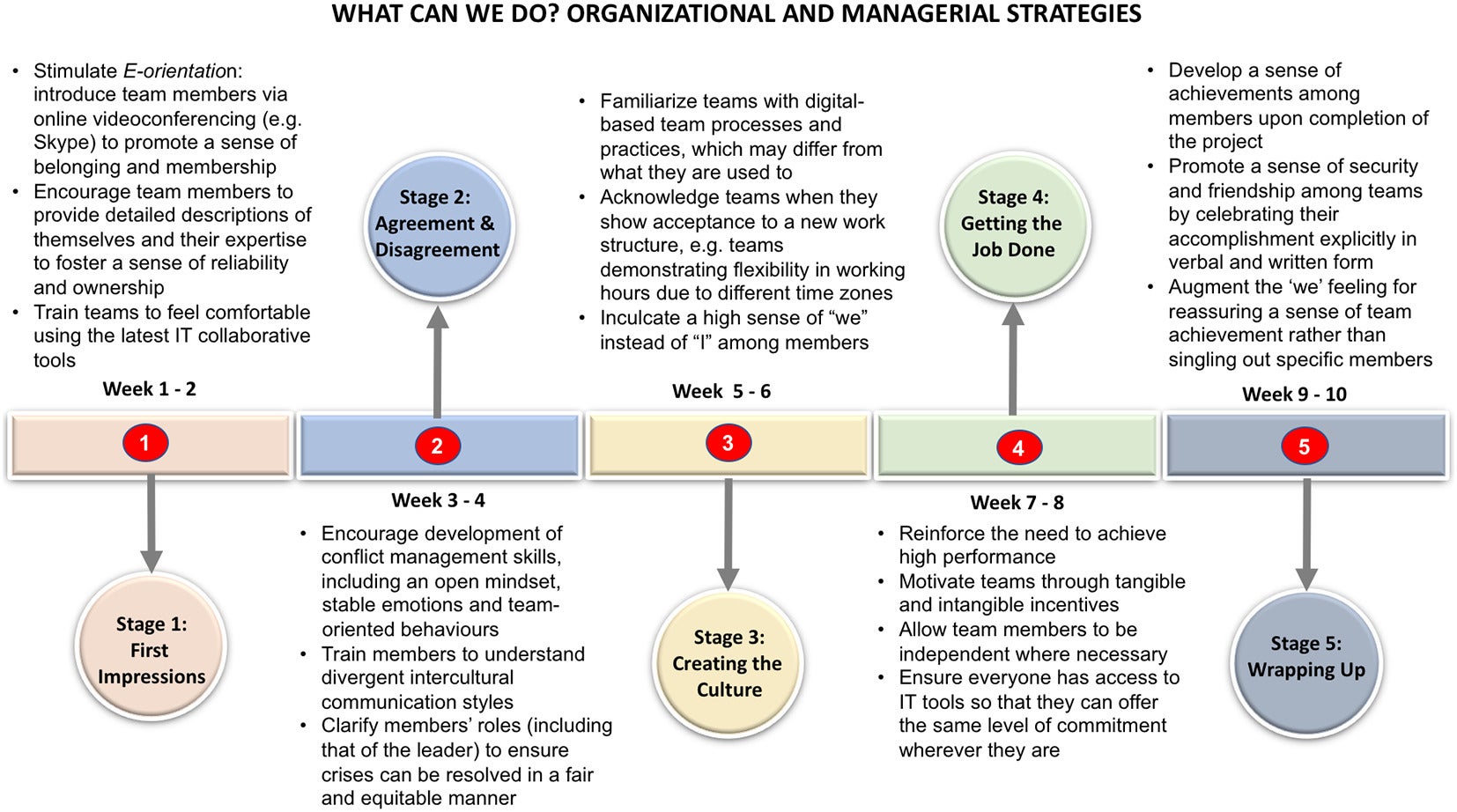How global teams build trust quickly
Picture this: It’s 9 am and you’ve just sat down at your desk in your home office in London. You open your inbox, expecting an email from a colleague in Japan, with information you requested before logging off the day before. But there’s no reply.


Picture this: It’s 9 am and you’ve just sat down at your desk in your home office in London. You open your inbox, expecting an email from a colleague in Japan, with information you requested before logging off the day before. But there’s no reply.
You were hoping to take advantage of the eight-hour time difference to get answers while you were sleeping, and now you’re annoyed. Do you hold onto that feeling, growing increasingly resentful during the day, and drafting passive-aggressive emails to your Japanese co-worker? Or do you let it go, knowing there was likely a reason they didn’t reply, and that you should be patient?
The difference between those two responses is trust. Organizational psychologists and good managers know that a lack of trust between co-workers can quickly lead to a breakdown in teams, particularly those that work across geographies and cultures. Research has shown that the quicker you can establish trust, the more efficiently a team can work on a task, and the more resilient it is to the inevitable stresses caused by time zones, cultural differences, pressures, miscommunications, and conflict. Academics call a global team’s ability to do this at the beginning stage of a project “swift trust formation.”

Trust is a “willingness to expose yourself to risk” and is predicated on predictability, says Mark Mortensen, a professor of organizational behavior at INSEAD, and co-director of the international business school’s program for digital leaders. Swift trust, he says, is “basically a lowering of the bound of what it takes to say, ‘I trust you.’”
Swift trust is most relevant to teams that need to get together quickly, temporarily, and across distances (typically geographic). Norhayati Zakaria, an expert in the impact of culture on the formation of global, virtual teams and an associate professor in human resource management at the University of Wollongong in Dubai, describes it as a “fragile” state. In the absence of face-to-face interactions, conversations about the team’s goals and workflow, and, particularly if it’s a longer project, about their personal contexts, become critical touchpoints.
“Swift trust is always about building that rapport via communication,” Zakaria says. When successfully created by a manager, it can help give a team the kind of long-term confidence that is crucial to their success.
Managers can develop this kind of trust by getting buy-in from their teams on the task at hand—through a strong articulation of the team’s goals and through structured workflows—but also in each other. To do this, they need to have an understanding of each individual team member’s working style, personality, and technical competencies. Then, they need to focus the team’s initial interactions on getting to know each other, by facilitating conversation and responding quickly to questions. One icebreaker example that Mortensen suggests is having team members give each other a tour of their home offices, explaining the significance behind the art, books, or household detritus that make up their background.

As the team forms, managers should encourage team members to be empathetic to the circumstances their co-workers are working under, and patient with the unpredictable challenges that can arise from time zones, technology, and human nature. They should mediate disputes with an understanding of the different ways people, and cultures, handle disagreements. And they should come back to these conversations.
“All of this makes you more likely to give the other person the benefit of the doubt—that’s really what trust buys you in these situations,” Mortenson says. This helps to bridge what academics have traditionally termed—somewhat ironically now—social distance. “When somebody is at a distance, you see them almost like black and white, and a lot less context. Remote and virtual work creates more of that distance,” Mortensen says.
Throughout this process, a more permanent form of trust builds as people see the predictability in their teammates’ approach to working—even if it’s different from how they do things. Martha Maznevski, a professor of organizational behavior at Ivey Business School at the University of Western Ontario, describes this as a process of moving from “head trust”—a cognitive leap of faith that’s created and tested at the beginning of a team’s formation—to “heart trust,” an affective state that’s formed through experiences. It’s shifting from the idea that we should be able to work together (because we’ve signed up to this project, we understand the reasons we’ve come together, and we’ve done this type of work before) to a belief that we can work together as a team (because we’ve gotten to know each other, we share values relevant to this task, and we approach the task together).
If that sounds like a lot for a manager to orchestrate before the actual work even begins, that’s because it is. But Zakaria says that for seasoned, successful managers of borderless teams, this kind of work is par for the course and a way for them to harness the diverse perspectives that make global teams unique. They know to pull on knowledge bases to treat a team as a matrix of individual personalities, operating within different social and cultural frameworks. Then, Zakaria says, they use that information to “create a culture that makes people feel comfortable to be together [and] collaborate at the best level.”
This article has been updated to clarify that Norhayati Zakaria is an associate professor in human resource management.